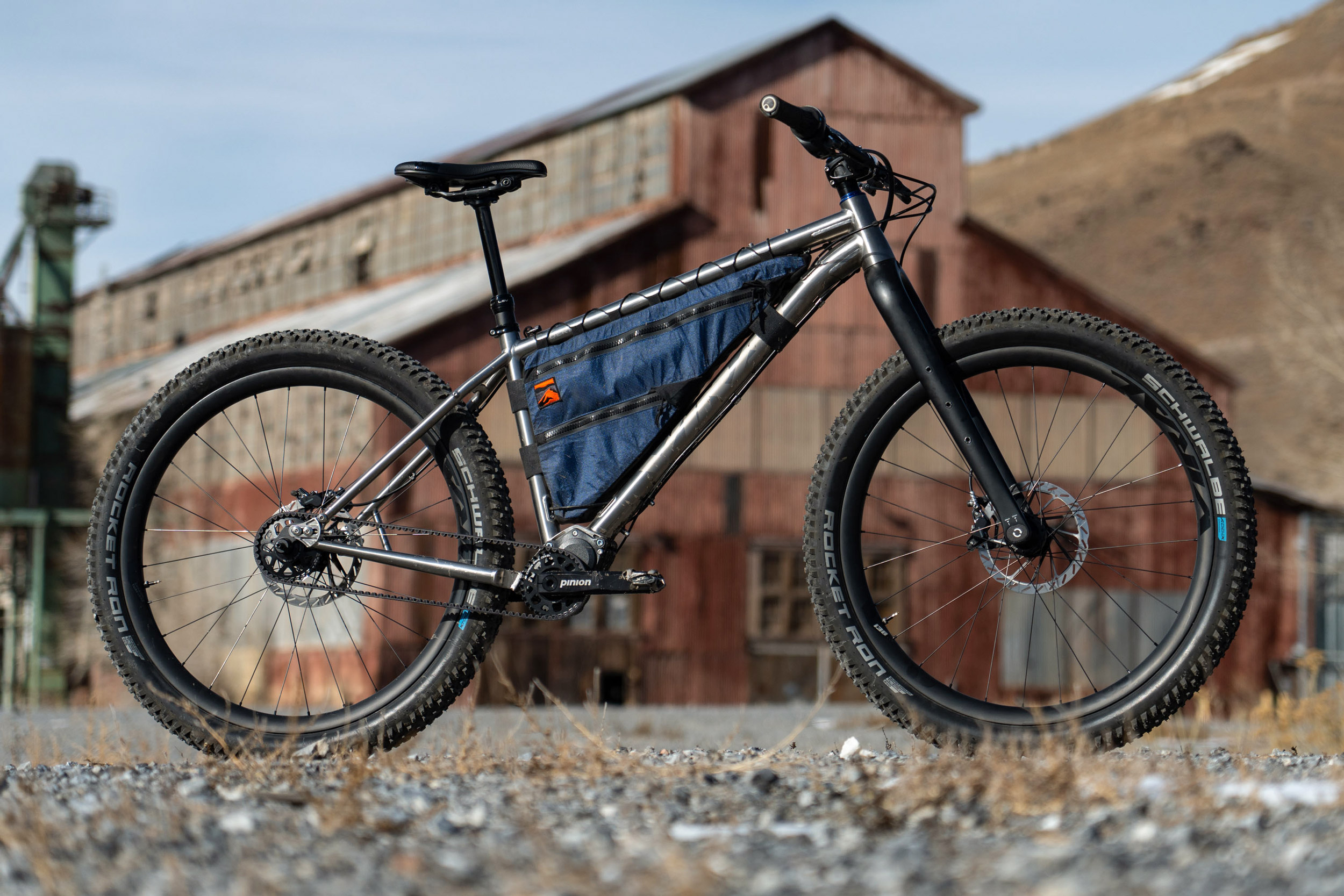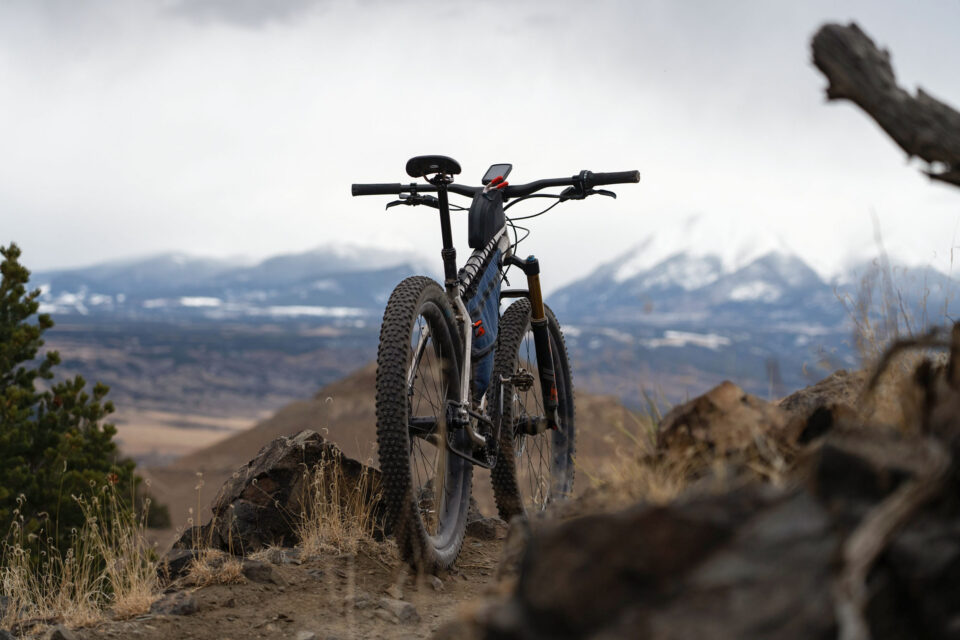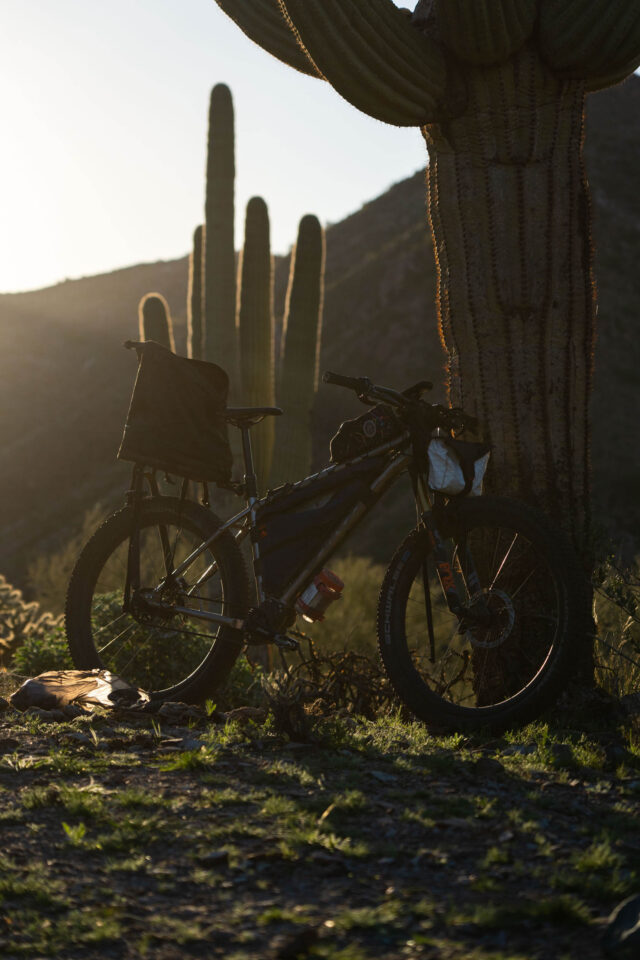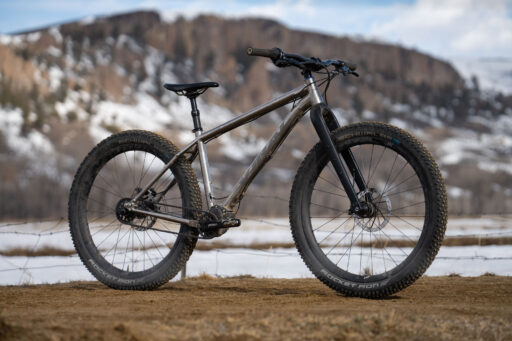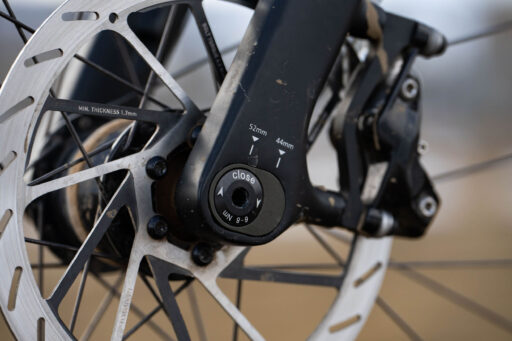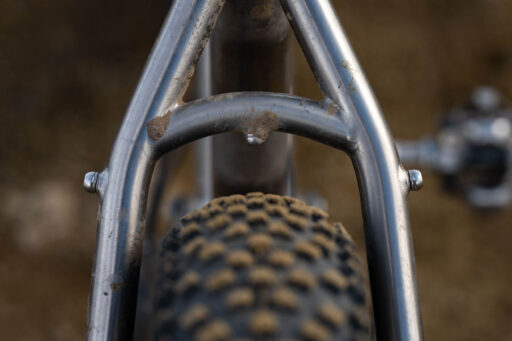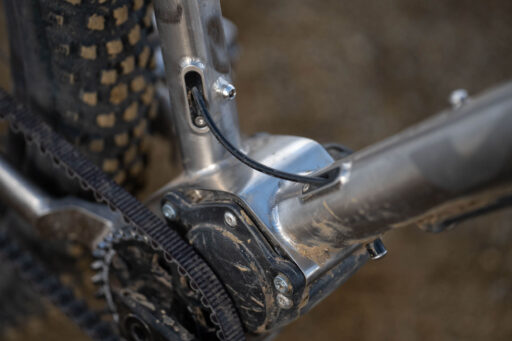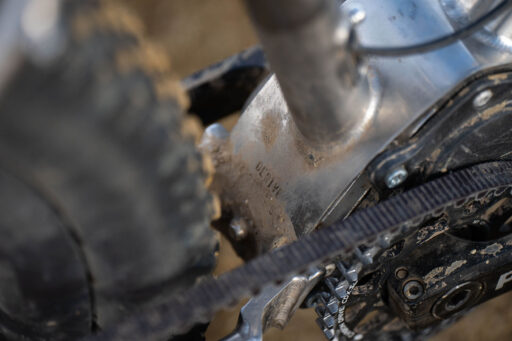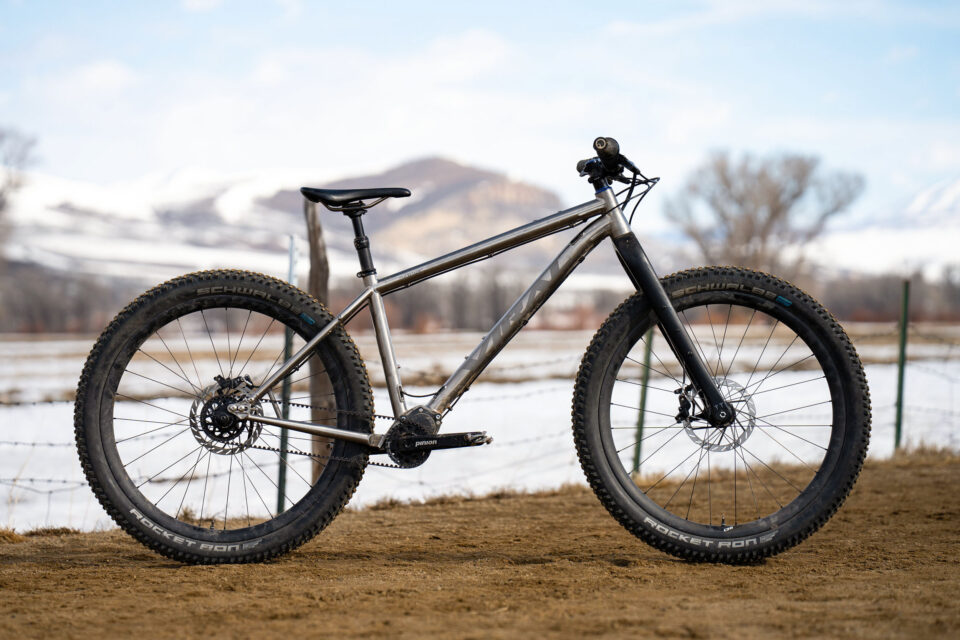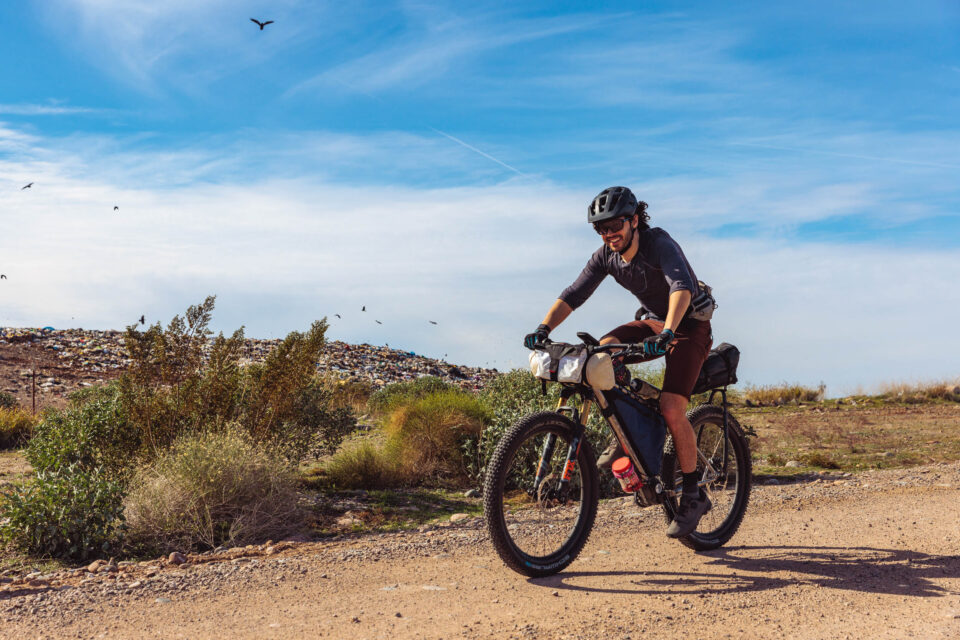Viral Derive Review: Built to Wander
Share This
The Viral Dérive is a trail and bikepacking-ready titanium hardtail with a Pinion gearbox, Gates belt drive, and plenty of mounts. We’ve been testing one against “the theory of the Dérive” over dozens of trail rides and several bikepacking trips for this review. Find the video review alongside a photo gallery and some written thoughts here…
It’s no secret to readers that we love niche bikes here at BIKEPACKING.com. And, if you’ve spent much time on this site, you’ve probably noticed that we also love naming and etymology. So, pair the Viral Dérive’s unique Pinion-based trail hardtail DNA with a compelling backstory to its name, and we knew this was a bike we had to check out. We’ve been testing one for several months and have taken it on dozens of trail rides and a number of bikepacking excursions for this review. Read on for a little about the name, an in-depth video review, and more.
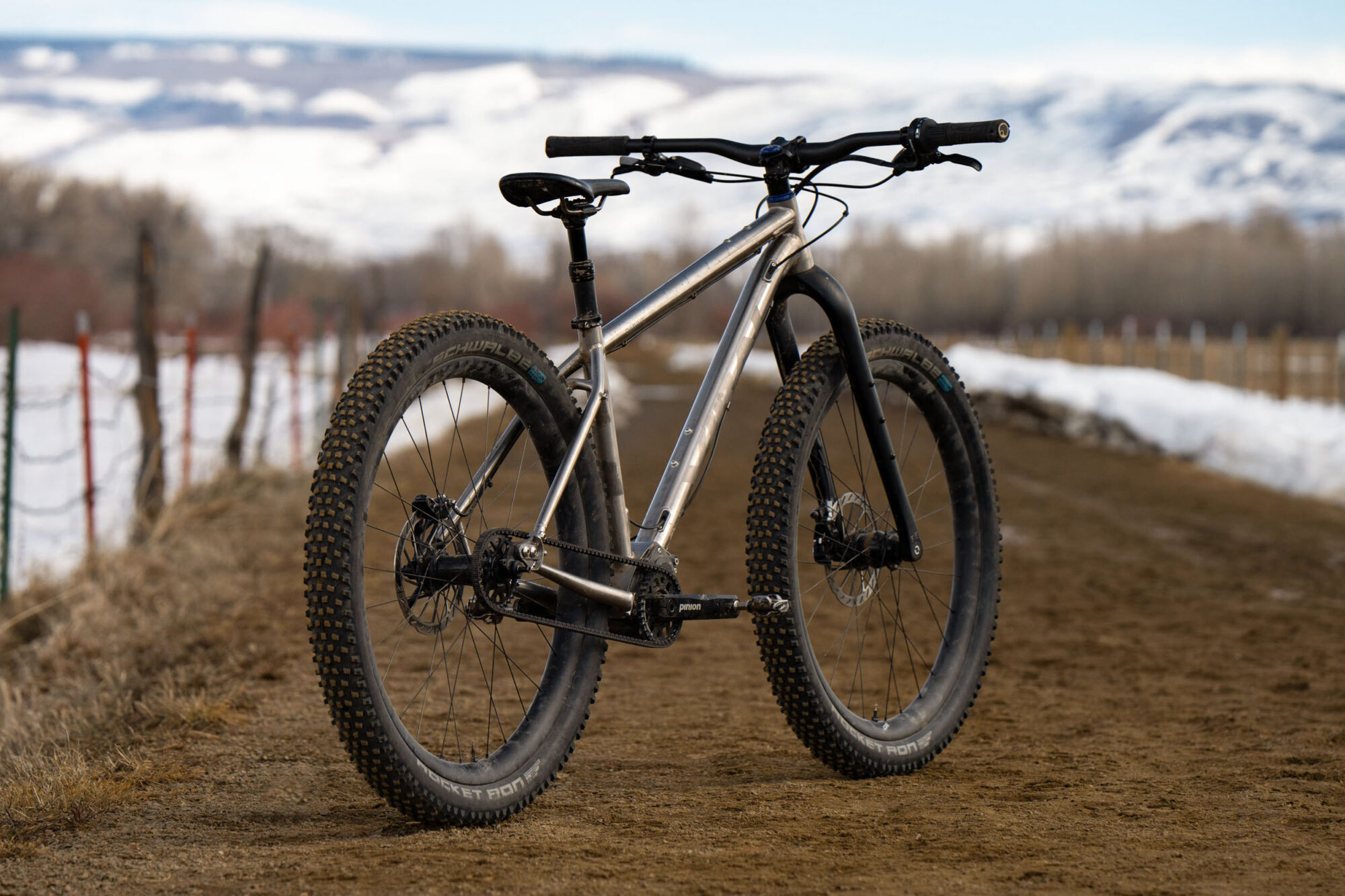
About that name. It was derived(!) from a 1956 written work by Guy Debord called Theory of the Dérive. In it, Debord describes the Dérive as “an unplanned journey through a landscape in which participants drop their everyday relations and let themselves be drawn by the attractions of the terrain and the encounters they find there.” To add its meaning, the Dérive bike is a derivative of the Skeptic, Viral’s flagship all-mountain hardtail that we reviewed several years ago. As a matter of fact, the Dérive is Viral’s first new model since it was founded by Steve Domahidy back in 2015. Watch the review below, then read on for details, comparisons, and pros and cons.
Hardtails Compared
The Dérive is built from the same triple-butted 3/2.5 titanium as the Skeptic, but its geometry is a mild departure from its long-travel sibling’s. The Dérive is designed around a 120mm travel fork, but it still has a modern trail pedigree with a relatively slack 66.5° head tube angle, a 75.5° seat tube, and a slightly higher bottom bracket. Similar bikes include the Cotic SolarisMax and the Chromag Surface Voyager, which you can see compared below.
| Bike | HTA / STA | Wheel base | Reach / Stack | Chainstay Length |
|---|---|---|---|---|
| Viral Derive | 66.5/75.5° | 1191 | 460/624 | 434-450 |
| Cotic SolarisMAX | 66/75° | 1196 | 461/610 | 444 |
| Esker Japhy (s3) | 66/76° | 1195 | 470/623 | 425-437 |
| Chromag Surface Voyager | 65.5/76° | 1196 | 463/621 | 425-440 |
As you can see, the Viral is the most conservative of the bikes listed above, but not by much. It’s still singletrack-oriented and strikes a good balance between a fun trail bike and a more stable dirt-road ATB. Another significant difference between the Viral and the bikes listed above is that it has the highest bottom bracket of any of them. With a 47mm BB drop, it’s nearly 20mm higher than the 65mm Esker, 13mm higher than the Cotic, and 3mm higher than the Chromag.
With its geometry designed around a shorter suspension fork, the Viral Dérive can also be used with a rigid fork, such as Niner’s RDO Carbon fork, the Salsa Firestarter, or Viral’s own Carbon BOOST MTB Fork that was on this test bike. It has an adjustable rake (from 44 to 52mm) and a 490mm axle-to-crown length, which is very similar to the ENVE Mountain fork—but the Viral fork is $160 less. It rides well and I appreciate this style of fork as its long axle-to-crown height not only mimics a shorter travel suspension fork, but it helps dampen trail or road chatter.
All that said, when I installed a 120mm Fox 34 suspension fork, it brought this bike to life, and it put me in a more upright position with a 530mm axle to crown. I think the carbon fork is great if you plan on mainly doing dirt road riding, but if you’re hitting some rough two-track or singletrack as I did on the Queen’s Ransom route in Arizona, I suggest going with a suspension fork on this bike as it makes a very versatile platform that’s a blast on descents. Either way, it’s nice to have options.
The frame was noticeably comfortable, especially over the course of a multi-day trip. However, it’s still stiff enough to remain efficient, especially in the rear end—a byproduct of the strict requirements to maintain the integrity of a belt drive bike.
As for sizing, I’m a little over 5’9” tall, and Steve recommended a medium. The medium comes with a 460mm reach and 624mm stack. Normally, a 460mm reach is pretty good for me, but I felt quite scrunched at first. I swapped the stock 780mm bars and 35mm stem for 800mm bars and a 50mm stem, and it felt pretty dialed after that, especially when I added my 120mm fork, but more on that soon.
Things get a little more complicated with the chainstays. The shortest chainstay length comes in at 434mm and can be as long as 450.5mm. According to my measurements, I tested the bike at 447mm, give or take. This was with a properly-tensioned 113T belt and 32T drive ring front and rear. The long chainstay length was noticeable, particularly when the bike was unloaded. It wasn’t as snappy as some other hardtails I’ve pedaled, but, when loaded up, that extra length paired with the somewhat lower 47mm bottom bracket made the bike feel very sure-footed. I encountered my fair share of pedal strikes with the 27.5 x 2.8” wheels, but that was an easy price to pay for the quick handling and grounded feeling—a quality that may be partially due to the balanced weight with the Pinion gearbox being centrally located on the bike.
When you purchase a bike from Viral, you’ll need to understand what length chainstay you want, as it will vary based on tire clearance and gearing of the pinion. You’re in good hands with Steve, however, as he is extremely knowledgeable. That said, if I wanted to run, say a 434mm rear end, I would need a shorter belt. I could use a 111t belt, which would allow me to run the bike in the shortest position with 27.5” wheels. That’s the only other orientation of the belt drive I wish I’d tested.
Build Kit
The bike I tested has a nice build kit, as shown below, but it’s nothing overly fancy. One might expect it to be quite heavy with the Pinion. However, at 27.5 pounds (12.47 kilograms) as specced, the Dérive isn’t overly bloated by any means. The Titanium frame clearly offsets the weight of the gearbox. Comparing it to a few of the steel hardtails we’ve reviewed lately, the Viral is the lightest, and would still come close to getting that title even if it had a standard Fox 34, which would increase the overall weight by about two pounds (or one kilogram). For reference, the Cotic SolarisMax tipped the scales at 29.7 pounds, the Pipedream S5 came in at 28.6 pounds with carbon wheels and a svelte build kit, and the Chromag Surface Voyager weighed over 32 pounds. Granted, this isn’t an apples-to-apples comparison; all three of those bikes are steel and a size large frame. However, it still shows that the Dérive isn’t overweight with the Pinion.
- FRAME: Viral Derive, Size Medium
- FORK: Viral Carbon BOOST MTB Fork / 2019 FOX Factory Stepcast 34
- WHEELS (RIMS/SPOKES): Viral 38i 27.5″ with Onyx rear, SP Dynamo front
- FRONT TIRE: Schwalbe Rocket Ron 27.5 2.8″
- REAR TIRE: Schwalbe Rocket Ron 27.5 x 2.8″
- CRANKSET: Pinion, 170mm
- DRIVETRAIN: Pinion P1.9
- BOTTOM BRACKET: N/A
- HANDLEBAR: Salsa Guide 35.0
- GRIPS: Ergon Ga2
- HEADSET: Chris King dropset IS41 upper/ IS52 lower headset bearings
- BRAKES: SRAM G2 RSC
- SADDLE: Ergon SM Mens
- SEATPOST: 31.6mm, 150mm KS Lev-ci Carbon
The Pinion Gearbox
If you missed our review of the Pinion, find that here. It provides a pretty thorough overview of the drivetrain. It was clear that Steve understood the Pinion benefits even if the majority of the bike industry has brushed it off. As I mentioned in the review, the Derive is pecifically engineered around the gearbox. Steve points out that the frame alignment is crucial for the bottom bracket to be accurately aligned with the rear hub axis. Because of this, he does things a bit differently from many other Pinion frame builders by using a cast piece of titanium that’s CNC’d to insure proper fitment with the Pinion gearbox. Steve mentions that some others are “just making a plate and then welding on threaded barrels to that plate for Pinion mounts.” For what it’s worth, when I swapped the Pinion from the 9- to the 12-speed and back to the 9-speed, it indeed was a perfect fit, making it very easy to install and uninstall the gear box.
After riding with the Pinion over a few months, it’s been rather eye-opening to try something completely different. Yes, there is a bit of efficiency loss, and it’s heavy and expensive, but you can’t ignore the fact that it’s very durable, relatively maintenance free, and has an incredible gear range.
While out Bikepacking
As opposed to the Viral Skeptic, which is their more aggressive hardtail built around a 150mm fork, the Dérive is well-suited for bikepacking. Outside of a pretty balanced geometry with ample tire clearance, the frame comes with rear rack and fender mounts, two bottle mounts inside the triangle, and a three-pack mount on the downtube. It also has a set of bosses on the top tube for a direct-mount top tube bag.
While the Pinion is heavier and may not have the mechanical efficiency as a derailleur-based drivetrain, that fact became less and less relevant when the Dérive was loaded up with gear. This bike is made to be loaded. It was extremely grounded and stable with bags and gear, and it almost breathes more life into the titanium tubeset. Paired with the 27.5+ tires, the bike is also quite confident and comfortable. Speaking of tires, the Viral Dérive was designed around 27.5 x 3.0″ tires, but it’s also capable of taking on 29er wheels and tires as well. Viral states it will likely fit 2.6″ wide trail tires, but the intended BB height might be affected too much. For that reason, they suggest a max tire size of 29 x 2.5″.
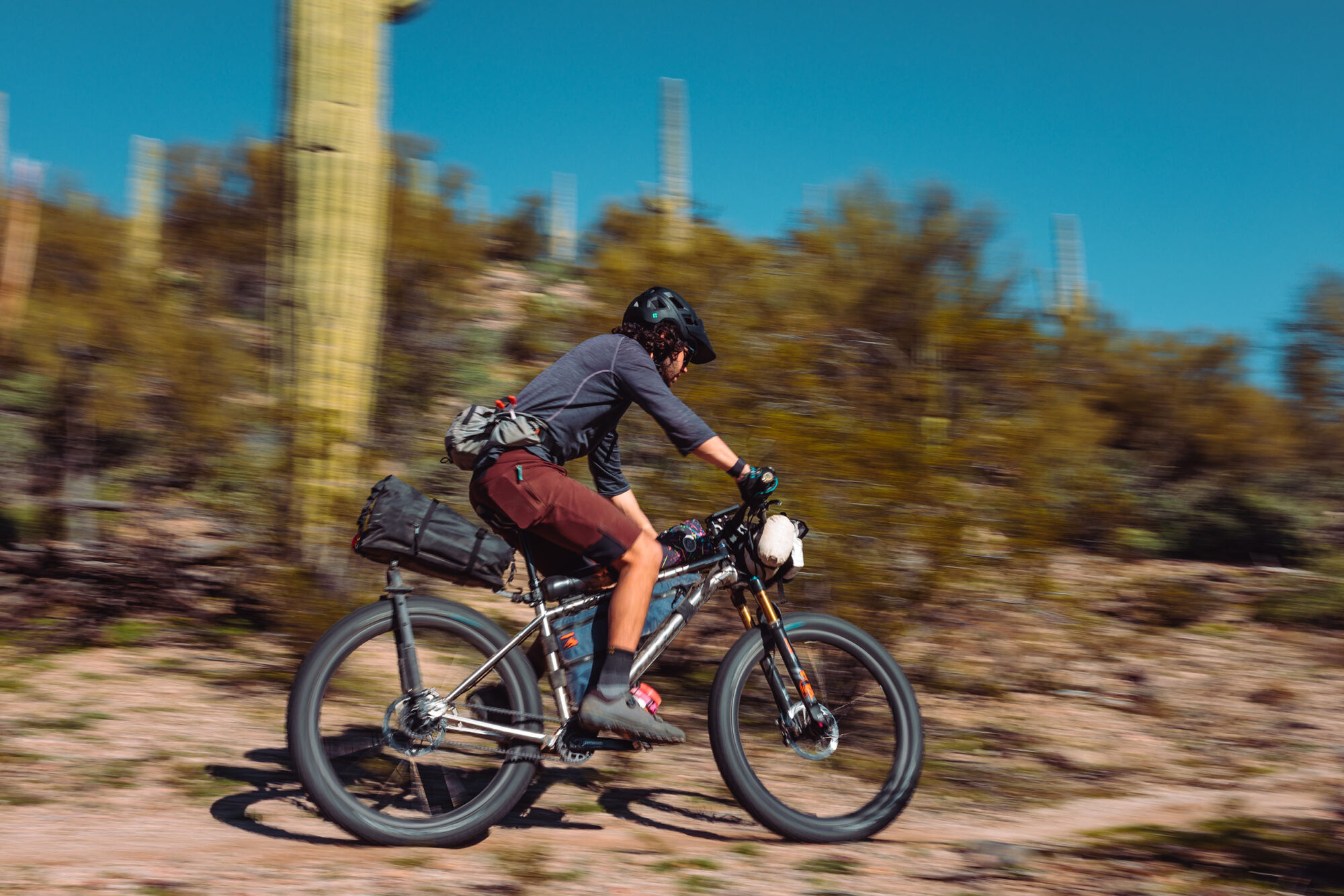
Although the size medium Viral Dérive has a relatively small front frame triangle, it’s still large enough for a stove, two liters of water, snacks, and a few smaller odds and ends. And if you opt for the carbon fork, it comes with three pack mounts on each side plus internal dynamo routing. For the record, I tested a pre-production fork that didn’t have fender mounts, but the current production model comes with them on the back of the crown and inside each fork leg. Overall, these options give you a great deal of flexibility when it comes to bikepacking, which is always welcome.
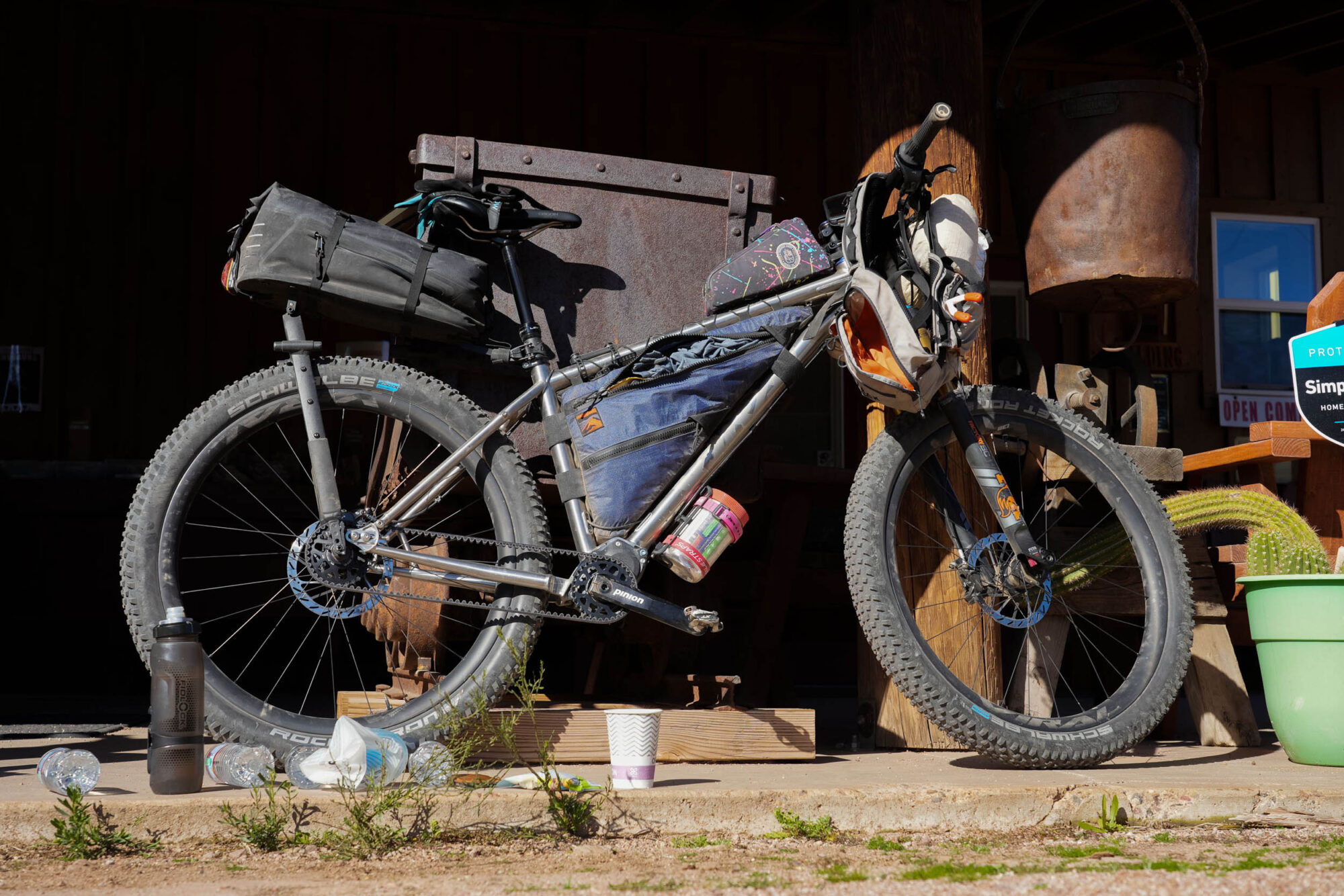
Viral Dérive frame kits retail for $4,795 and include a triple butted titanium frame, a Pinion C1.12 gearbox, CNC cranks, shifter, Gates CarbonDrive belt and cogs, a lockring tool, and the first year oil change for the gearbox. Colors for 2021 include the raw Ti shown here, and complete bikes can be built to suit any rider’s needs.
- Model Tested: Viral Dérive, Size Medium
- Actual Weight: 27.5 pounds (12.47 kg)
- Place of Manufacture: Taiwan
- Price: $4,795 (frame kit with Pinion)
- Manufacturer’s Details: Viral.bike
Pros
- Excellent, versatile trail and bikepacking-ready geometry that’s very grounded
- Good ride quality that’s even better when loaded
- Maintenance-free, reliable drivetrain
- Loads of mounts and gear carrying options
Cons
- Changing the chainstay length is complex
- Expensive investment
- Locked into the Pinion gearbox (no singlespeed or tinkering)
Wrap Up
Overall, If I was to imagine the perfect bike built around the Pinion gearbox, I feel like the Dérive is it. That said, you are absolutely paying for premium in the Pinon and a well-crafted titanium frameset. The Dérive frame kit starts at $4,795, which includes the gearbox, CNC cranks (which are more expensive), shifter, all of the mounting hardware, the lock ring tool, one oil change, and a spacer kit for the singlespeed rear cog to fit on a full-size cassette body.
Am I sold on the Pinion driver? Not entirely. But I also didn’t dislike it, and it makes sense if you are want simplicity and a long-lasting bike with minimal maintenance. The Dérive frame has a very comfortable, stable, and playful ride. It put me in a nice, ready position, allowing me to stay comfortably seated for technical and steep climbs yet instantly positioned to be on my game when the riding trended downhill. I was pleasantly surprised at how well it managed technical descents. I don’t often say I love a bike I review, but there is not much to hate about the Viral Dérive.
Related Content
Make sure to dig into these related articles for more info...
Please keep the conversation civil, constructive, and inclusive, or your comment will be removed.






